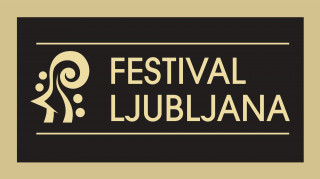On Monday, 8 July the Ljubljana Festival plays host to the Seongnam Philharmonic Orchestra, with a concert in the National Gallery (beginning at 5.00 pm). This South Korean orchestra was founded in 2003 with the artistic vision of providing its home city with a broad range of cultural events and becoming one of the country’s representative orchestras.
Its artistic director and chief conductor is the highly experienced Nanse Gum, who graduated from the Berlin University of the Arts in 1977 and was the first Korean to win a prize at the Herbert von Karajan Conductors’ Competition. Another winner at the Karajan Conductors’ Competition in 1977, the year Gum won his prize, was the Russian conductor Valery Gergiev, who is well known to attendees of the Ljubljana Festival.
The programme will begin with a performance of Benjamin Britten’s Simple Symphony, a work that can also be heard in the Wes Anderson film Moonrise Kingdom (2012). This will be followed by Wolfgang Amadeus Mozart’s Violin Concerto No. 3, which Mozart himself nicknamed the “Straßburg” concerto because of allusions to a local dance.
The soloist will be Maria Solozobova, who plays an Italian violin made by Nicolò Gagliano in 1728. One of the most promising violinists of her generation, famed for her combination of virtuosity and creative spontaneity, she was described by Yehudi Menuhin as “a wonderful talent with a lively temperament, virtuosic brilliance and a very high professional level.”
She has won several prestigious international music competitions, for instance the Johannes Brahms Competition in Austria (first prize and special audience prize, 2000) and the W. A. Mozart Competition in Zurich (first prize, 2005), and has performed worldwide with leading musicians such as Martha Argerich and Mikhail Pletnev, the latter of whom has appeared at the Ljubljana Festival this week.
The second half of the concert will begin with a composition by Jung Jae-Min. The haegeum, a traditional Korean instrument, will be played by Min Jio, who frequently performs with specialised ensembles devoted to this instrument, such as the Korean Haegeum Ensemble and the Haegeum Research Society. The haegeum is unique both in its appearance and in its sound. It is classified as a string instrument but, at the same time, as a wind instrument, since it can make a continuous sound using a bow.
The evening will end with Wolfgang Amadeus Mozart’s Symphony No. 40 in G minor, the composer’s best known orchestral work. While the first, second and fourth movements are perfect examples of sonata form, the third movement consists of a minuet and trio. Together, the four movements represent a perfection of form that combines with Mozart’s melancholy melodic invention, leaving the work open to countless emotional and social interpretations.
Tickets are available online at ljubljanafestival.si and at the Križanke box office, petrol stations and other Eventim ticket outlets.

